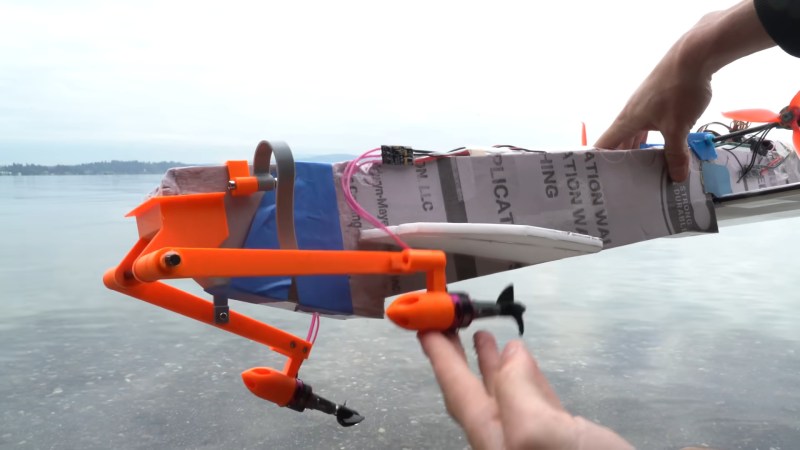What Do You Call an Ekranoplan With an Outboard Motor?
-
What Do You Call an Ekranoplan With an Outboard Motor?
If there’s one thing [rctestflight] likes, it’s… probably radio controlled test flights. If there are two things [rctestflights] likes, the second one is probably ground-effect vehicles, AKA Ekranoplans. Tired of having them flip over and crash, he’s trying an an innovative solution: stick a planing hull on it.
Ekranoplans have a stability problem because the center-of-pressure isn’t static: as the wing gets closer to the ground, the high pressure cushion of air that creates the ground effect tends to put more lift rearwards. The net effect of that is to torque the vehicle nose-down, which is kind of a self-limiting problem at a fraction of a wingspan’s altitude. The opposite problem is more concerning: the higher the ekranoplan gets, the more it wants to nose up, and there’s nothing to stop it. That leads to the vehicle flipping over.
In this video, [rctestflight] takes a few stabs at trying to solve the stability problem– he starts with a flat planing hull on the nose, with the idea that the vehicle will be nose-heavy enough to ride serenely over the water. Water isn’t actually flat, though, and the nose bumping over the waves wasn’t able to do what he wanted. He then switches to a feeler that is to ride on-surface to adjust the pitch of the nose-mounted propellers–up if it pokes the water, down if it can’t– to provide passive pitch stabilization. That does work at some airspeeds, but produces a predictable porpoising effect, even with an elastic band for damping. That design might show promise with more refinement, but if you’re using something to give altitude feedback, it might as well be lidar.
The next iteration of the design places a pair of hydro-screw propellers on the nose, for all the world like a pair of outboard motors. We’re not even sure what to call the resulting vehicle, but “more stable” is unfortunately not it. It doesn’t seem to fly any worse, mind you, but certainly not well enough to justify the complexity, especially once he goes down the rabbit hole of adding suspension to the motors.
Ultimately he ends up refining the planning hull into a V-shape, since a V-hull can cut the waves and give a smoother ride than a flat-bottomed boat. We can’t help but agree with [rctestflight] that the standard configuration of a long hull and large horizontal stabilizer is likely the way to go, since the whole point of a ground-effect vehicle is to avoid the energy cost associated with skipping over waves. Still, it’s hard to deny that these prototypes are hacks, and we appreciate the brief lesson in aerodynamics he provides in the video.
Given some of the other projects he’s tackled, we’re kind of disappointed he didn’t try a hydrofoil.
youtube.com/embed/SbRxgZVG5fs?…
